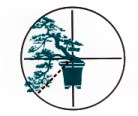|
|
The
Bonsai Collection
(or everything you ever
wanted to know about Bonsai)
Hundreds
of years ago, Chinese gardeners brought a touch of the
forest into their gardens by potting trees and keeping
them small enough to move around. The art of Bonsai first
appears in Chinese paintings of the 13th century and a
Japanese scroll of 1309. It is now enjoyed and practiced
around the world.
Trees may be collected anywhere, from an open field to
a wild mountainside, where alpine dwarfs are especially
prized. More likely they are grown from seed and then
patiently trained. Once the tree is placed in a pot, it
becomes a Bonsai.
The result is a tree that remains small, often appearing
older than its chronological age, and skillfully shaped
to bring out its character. Throughout its training, the
trees natural health and growth patterns are always respected.
In the finest Bonsai, the spirit of the tree still speaks
in its own voice.
|
|
Bonsai has
been translated from the Japanese as "tray-tree", a simple
term which covers dozens of styles developed over the centuries
in a variey of countries. Some experts classify Bonsai in as many
as 50 different styles. Most often, classification is determined
by the angle of the trunk. These six styles are among the most widely
recognized:

Formal
Upright The tree is trained with a single, upright
trunk and symmetrical branches.
|

Informal
Upright The single trunk curves, but the crown and
the base usually remain aligned/
|

Slanting
The trunk may be thick or thin but always grows on a strong,
diagonal slant.
|

Semi
Cascade The curved or straight trunk extends horizontally
beyond the pot but does not drop below the bottom of the
pot.
|

Cascade
The trunk usually grows upwards before spilling over the
edge of the pot.
|

Bonsai
trees are sometimes grown in "forests" or "groves"
in shallow pots, often combined with rocks or driftwood
to create miniature landscapes.
|
Containers
are chosen to contrast with or complement the Bonsai itself. Some
are decorated and some are very simple. In every case they have
been carefully chosen by the artist to harmonize with the plantings.
|
Struggling
tree on crag,
In bonsai I have captured
Your enduring shape.
John Naka
|
|
|